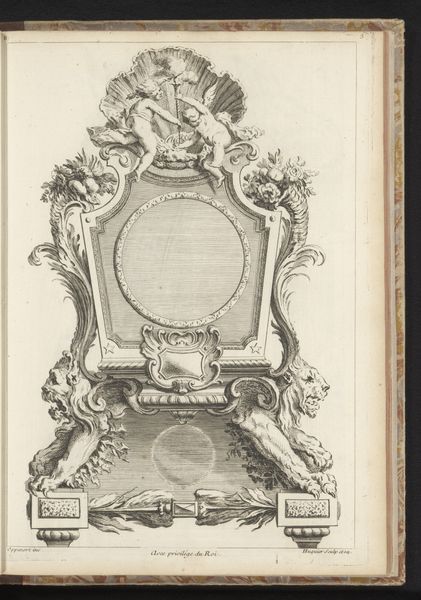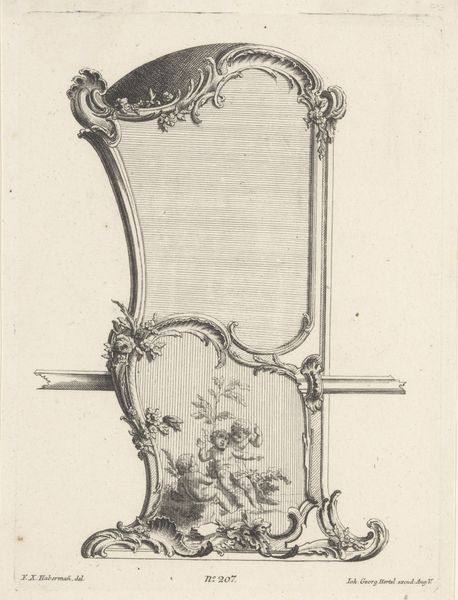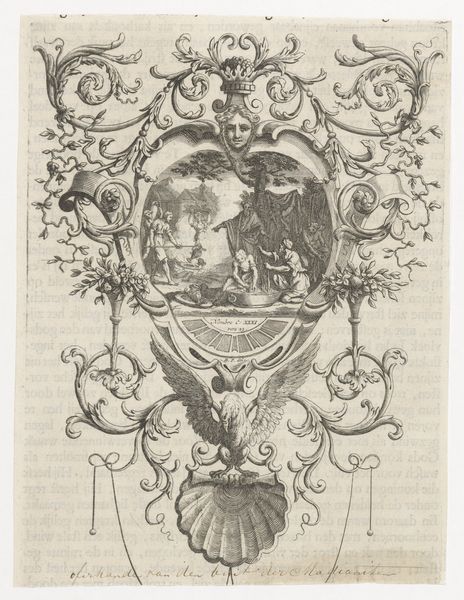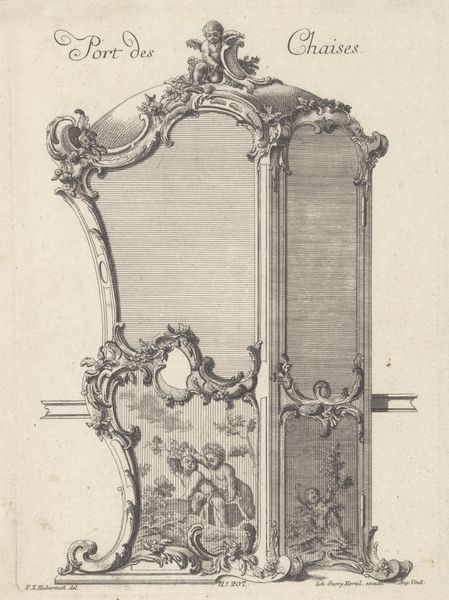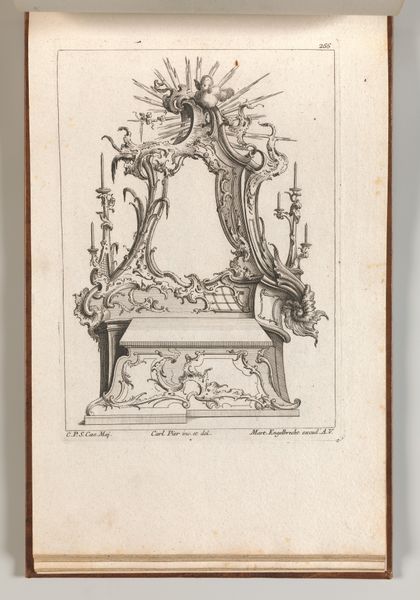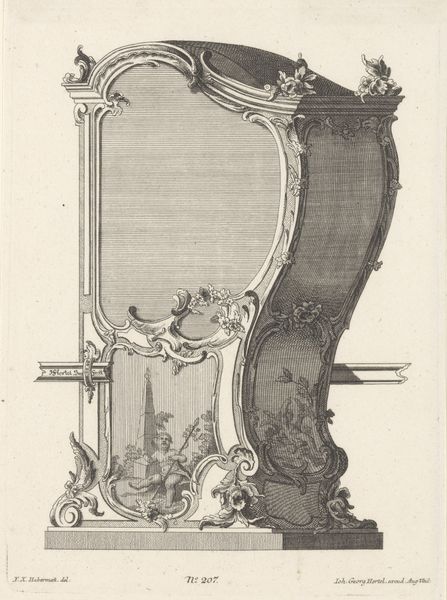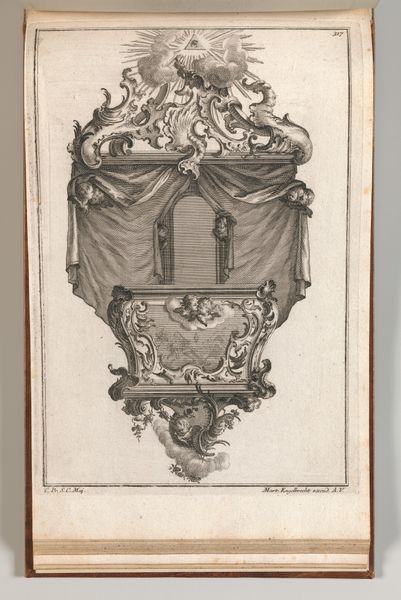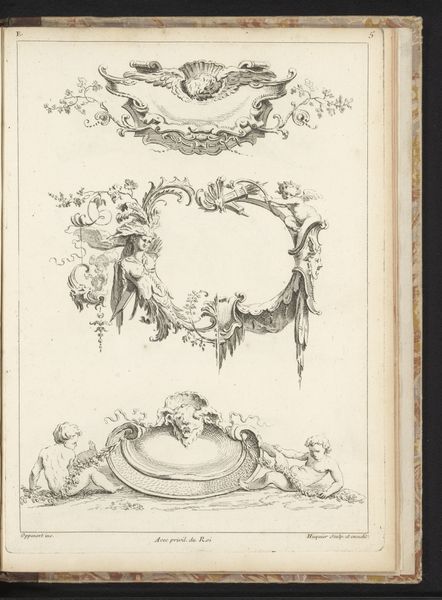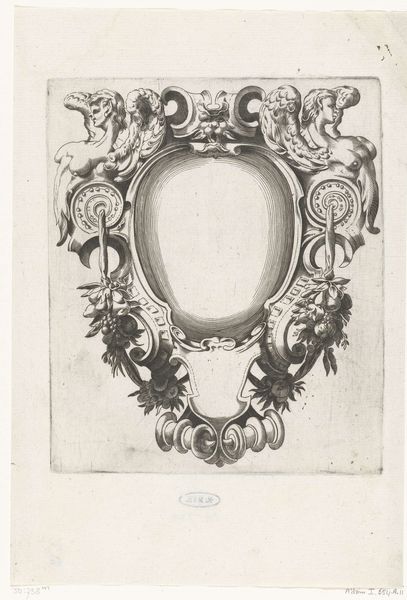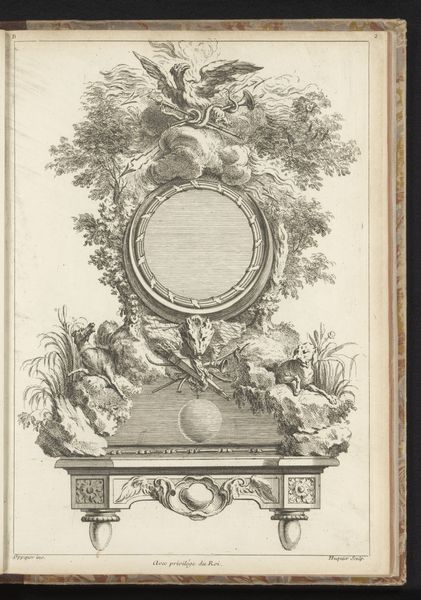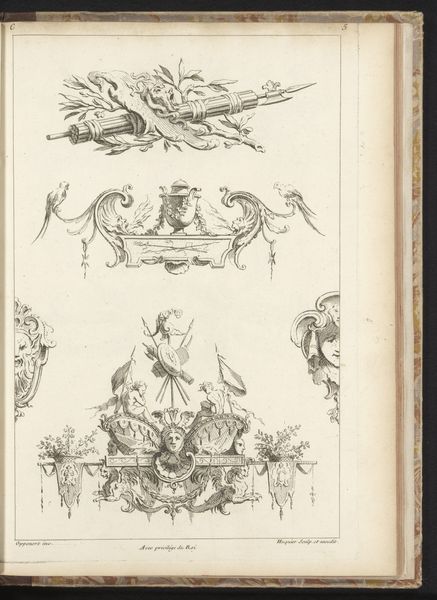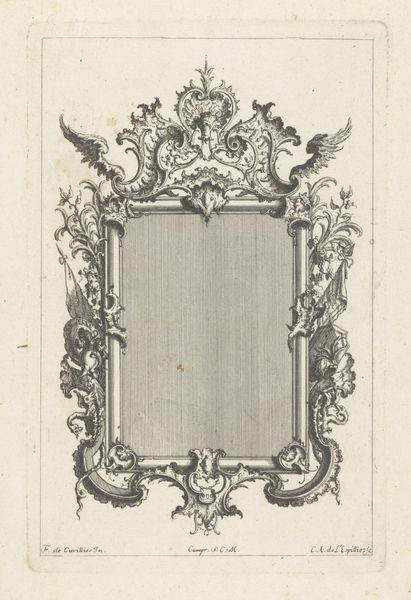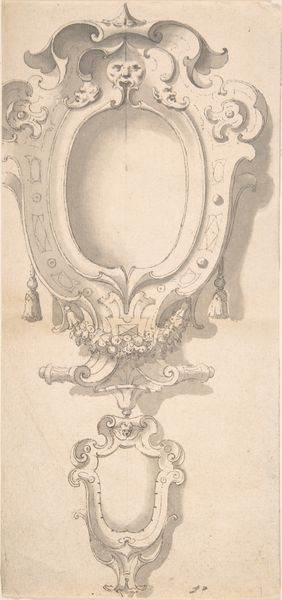
Ontwerp voor een klok met leeuwenpoten en een adelaar bovenop c. 1725 - 1750
0:00
0:00
drawing, paper, ink, pen
#
drawing
#
aged paper
#
toned paper
#
baroque
#
mechanical pen drawing
#
old engraving style
#
paper
#
personal sketchbook
#
ink
#
pen-ink sketch
#
pen and pencil
#
pen work
#
pen
#
sketchbook art
#
pencil art
Dimensions: height 324 mm, width 242 mm
Copyright: Rijks Museum: Open Domain
This is an etching by Gabriel Huquier, created in France in the early 1700s, that presents a design for a clock. But what does this drawing tell us about French society at the time? We see visual cues of wealth and power: the lion's paws, the eagle, and the ornate decorations. These aren't just aesthetic choices. They reflect the values of the French aristocracy and their aspirations to grandeur. During this period, France was a monarchy, and images of power and authority were carefully crafted to maintain the social hierarchy. Huquier's design caters to the tastes of the elite. It is self-consciously conservative and reinforces the status quo. To fully understand this work, we might consult historical texts, such as inventories of aristocratic households, design pattern books, or even political pamphlets from the era. Art is always made within a specific social and institutional context.
Comments
No comments
Be the first to comment and join the conversation on the ultimate creative platform.
